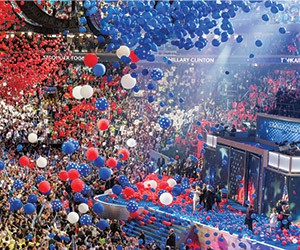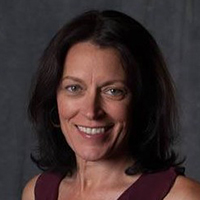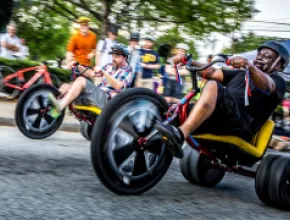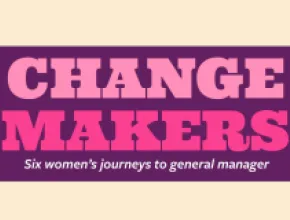Philadelphia has been making history for centuries, so it’s only fitting that this city of milestones—the birthplace of American democracy—set the stage for one of the most groundbreaking political confabs to date: the 2016 Democratic National Convention, which named the first female presidential nominee from a major political party, Hillary Clinton.
Meetings Today visited the city just before the big event in July to check out many of the major venues and exhibits and meet with some of the key players from the DNC, following up with several after the conclusion of the convention.
Hosting the DNC, which drew roughly 6,000 delegates, 20,000 media and 50,000 total convention participants, was no small feat. With plenty of pre-planning, public-private sector collaboration and grace under pressure, Philly fared quite well, according to most estimates.
“The DNC occupied over 97 hotels and brought an economic impact of $250 million to $300 million to the city,” said Julie Coker Graham, president and CEO of the Philadelphia CVB. “The DNC really has a long-term effect on a city, so we will see everything from new residents to new business, including growth in meetings and conventions to Philadelphia given the flexibility of our city and how walkable it is.”
The DNC was a bit more challenging than most of the major events the city has hosted, Coker Graham added.
“We’re used to the center of a convention being at the Pennsylvania Convention Center, but with the DNC, the Wells Fargo Center was where the evening speeches were held, so we were managing two different spaces,” Coker Graham said.
Meanwhile, several DNC events and special exhibits were also held before and during the event, including two major welcome parties (see sidebar, page 28), not to mention countless other private gatherings; the Donkeys Around Town public art exhibit of 57 fiberglass donkeys, each painted by a local artist to represent a participating convention delegation; PoliticalFest, a nonpartisan exhibit at seven important sites throughout the city; and watch parties at public projection screens.
Wells Fargo Center, home to major sports events and music shows, hosted the evening speeches and concerts, including Alicia Keyes, Lady Gaga and Lenny Kravitz. With roughly 35,000 to 40,000 people per day coming through the venue and outside perimeter, including 600 staff members and consultants and 3,000 to 4,000 volunteers, Wells Fargo Center planning for the DNC began more than a year before the event.
Travis Dredd, deputy CEO, convention complex for the DNC Committee, oversaw all of the initiatives at Wells Fargo Center.
“It was a huge success,” Dredd said, adding that the 2016 DNC was the fifth DNC he has worked.
To manage and build out the Wells Fargo Center for the DNC, which included the stage, seating, wiring and a tented media pavilion, Dredd hired two executive producers, Ricky Kirshner and Vic Bulluck, and four other partners: Hargrove Incorporated, an event services firm, Perryman Building and Construction, and Populous and Ambit, two architecture and design firms.
“The Wells Fargo Center was ideal in terms of putting on a convention,” Dredd said. “Since they hosted the Republican National Convention in 2000, they had several technological upgrades, and the staff was big steps ahead in terms of planning.”
The 750,000-square-foot facility was the perfect size for a DNC, but to accommodate the buildout of the stage and other elements, Dredd said more than 2,000 seats had to be removed and replaced with an additional 2,000 independent seats. Meanwhile, 40 of the center’s club box suites were renovated to turn them into TV studios, and a 120,000-square-foot media pavilion was built outside.
“Then we ran 750 miles of cable and 125 miles of fiber, so it was pretty significant,” he said.
The 2016 DNC at Wells Fargo Center was the most technologically savvy and advanced of any DNC, according to Dredd.
“There were 310 televisions that we employed at the arena, we created over 300 wireless access points, and we bolstered the Wi-Fi inside the arena to make sure people were able to get their messages and photos out on social media,” he said. “We collaborated with Twitter and Snapchat, Instagram came out and set up a booth, and Facebook had a cafe there.”
PageBreak
The DNC Committee also expanded its digital team, which went out and collected stories and pushed the content out daily. Dredd said one of the most successful aspects was Studio 16, where celebrities and politicians were interviewed about their experience at the DNC.
Creating some of the hospitality spaces that were close to the floor was one of Dredd’s favorite experiences, as well as the design of the podium itself and the way it gave the event an intimate feel.
Logistical challenges were curbed by the creation of several lanes to make sure people could move around quickly, particularly the volunteers tasked with delivering the hundreds of signs and flags to audience members before certain speeches.
Dredd added that the balloon drop at the end provided a memorable highlight.
“We haven’t done a balloon drop for a DNC since 2004, so that added a lot of energy to the atmosphere,” he said.
Meanwhile, the content of the program is what Dredd said people will remember most.
“It was about leadership and had an intentional focus on themes each day: uniting the party, shared values, the contrast between our party and the other party, and the security of the country,” he said. "It wasn’t until the evening when the simulated glass ceiling broke and Hillary Clinton appeared that you realized history was being made.”
The other major venue of the DNC, the recently expanded Pennsylvania Convention Center, hosted part of PoliticalFest and was the site for media credentialing, press briefings, caucus meetings and other events.
Meeting rooms at the Pennsylvania Convention Center were converted to offices for the staff of the DNC, and rooms were prepped for caucus and council meetings, breakfasts and special events. Prior to the convention, the center implemented technology upgrades and new sustainability features to seven meeting halls, 82 rooms and the newly dedicated Michael A. Nutter Theatre.
Mary Ann Torres, director of event services at the convention center, said that while there were obstacles, planning and executing the event went quite well.
“The main challenges on my end as an event manager were keeping up with the many pop-up events that come with a political convention,” she said. “I would get a call or e-mail from my counterpart on the DNC Committee, for example, that the Bernie Sanders campaign wanted to do a rally. Another time, Elizabeth Warren came by to give a presentation for 1,200. But we all rose to the occasion for those pop-up events, which were many.”
Managing the crowds, safety and security was of utmost importance, Torres added.
“The Sanders event was set for 1,800, and our ballroom reached capacity,” she said. “People were standing on chairs and the doors were bursting, so we were monitoring everything carefully.”
The center hosted thousands of people daily during the DNC, with roughly 80 events held.
Two highlights, according to Torres, were a Home Away from Home area, designed for delegates not staying in nearby hotels, and PoliticalFest, which completely transformed one of its halls.
“Home Away from Home, sponsored by Comcast, was very well attended,” she said. “It was the first time we’ve done something like that. We had lounges, places where you could charge your phone and work on your laptop, and bar, refreshment and food areas.”
Coordinated by the 2016 DNC Host Committee, the PoliticalFest portion took place in Hall F with an exhibit entitled Politics and You! The exhibit focused on American presidents, with an Oval Office replica, Air Force One fuselage and other memorabilia.
Aside from the convention center, PoliticalFest, celebrating political history, government and the road to the White House, took place at the following locations: National Constitution Center, National Liberty Museum, Philadelphia History Museum at the Atwater Kent, Library Company of Philadelphia, Historical Society of Pennsylvania and Heritage Center at the Union League.
LeapStarr Productions, a diverse, woman-owned event production, design and fabrication company, was contracted to produce PoliticalFest.
“These exhibits embody the host committee’s commitment to inclusion throughout its convention planning efforts and reflect the diversity of our nation and its history,” said former Pennsylvania Gov. Ed Rendell, chair of the Philadelphia 2016 DNC Host Committee, during a press briefing.







